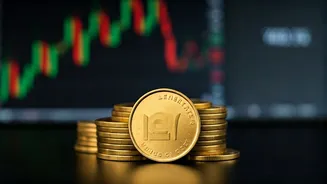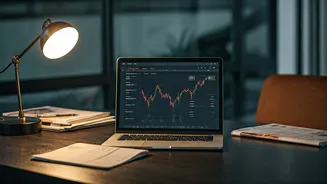Market Direction Analysis
The 'Inter-Market Analysis – How Macro Factors Impact Market Direction?' webinar, featuring Rohit Srivastava, offered valuable insights into how broader
economic influences steer market performance. The discussions likely delved into elements like global economic data, including Purchasing Managers' Indices (PMI), which offer snapshots of manufacturing and service sector activities. These indicators were vital to understanding the stabilizing trends in manufacturing combined with a robust momentum in services, especially in a global perspective. The analysis probably explored how central bank actions, such as the Bank of England's (BoE) rate decisions, further impacted currency valuations and investment strategies. The webinar may have also addressed geopolitical events and their ripple effects on different markets, providing listeners with a comprehensive understanding of the interconnected financial world.
Multicap Funds Explained
The webinar on 'Multicap Funds: A Perfect Balance Between Growth & Stability,' with R Srinivasan, Ruchit Mehta, Sukanya Ghosh, Priyanka Dhingra, Saurabh Pant, and Nidhi Chawla, focused on the advantages of these investment instruments. These funds provide a diversified portfolio that includes investments across large-cap, mid-cap, and small-cap stocks. Such a strategy allows investors to tap into the growth potential of various market segments while moderating overall portfolio risk. Discussions probably covered portfolio allocation strategies, showcasing how a blend of market capitalizations can lead to enhanced returns and a stable investment environment. The experts may have shared insights into fund selection criteria, emphasizing the importance of factors like fund manager experience, historical performance, and expense ratios. The webinar likely aimed to equip investors with the knowledge to create a well-balanced portfolio.
Swing Trading Strategies
Bharat Sharma's webinar, 'Identification of Swing / Positional Opportunities – Charts Insights,' offered a deep dive into technical analysis to find lucrative short-to-medium-term trading opportunities. Participants likely learned to identify chart patterns, understand indicators, and assess market sentiment, all of which are critical for making profitable trading decisions. The session probably covered the technical analysis tools, such as moving averages, relative strength index (RSI), and Fibonacci retracements, to pinpoint potential entry and exit points. Sharma may have discussed the significance of risk management, outlining how setting stop-loss orders and diversifying trading activities can protect against losses. The focus would have been on practical application, aiding participants in developing a systematic approach to swing trading.
India's Growth Trajectory
Vaibhav Agrawal presented the viewpoint that India is on the cusp of an economic takeoff. His session likely highlighted key drivers of the Indian economy's growth. The webinar could have featured projections of high GDP expansion, fueled by domestic consumption and governmental policies, such as the Production-Linked Incentive (PLI) scheme. Agrawal may have discussed sectors expected to drive growth, like manufacturing, infrastructure, and technology. The discourse likely included considerations around inflationary pressures, interest rate adjustments, and structural reforms required to maintain and improve the nation's economic momentum. Investors could have gained insights into how to leverage opportunities to capitalize on the Indian economic growth story.
Commodity Investment Strategies
Somasundaram PR's webinar focused on commodity investment strategies, specifically gold investments, a key component in a diversified portfolio. The session may have covered the dynamics of the global gold market, discussing factors like supply and demand, geopolitical risks, and currency fluctuations, all of which determine gold's price. The expert might have presented the ways to invest in gold, including physical gold, gold ETFs, and gold mining stocks, detailing the advantages and disadvantages of each. Attendees could have received insights into the role of gold as a hedge against inflation and a safe-haven asset in uncertain economic times. The presentation probably aimed at providing a comprehensive understanding of gold investment and its significance for Indian investors.
Kagi Chart Analysis
Brijesh Bhatia's session, 'Kagi Charts - The Forgotten Technical Analysis Technique,' introduced the application of Kagi charts in technical analysis. Kagi charts, unlike bar or candlestick charts, focus on price movements and disregard time, which makes them effective in spotting trends. Bhatia may have educated participants on how Kagi charts are constructed, highlighting the significance of price reversals and support/resistance levels. The webinar would have explored the use of Kagi charts to identify potential entry and exit points, giving traders insight into market sentiment and trend strength. Bhatia probably emphasized the use of Kagi charts to complement other technical analysis tools, enabling traders to make well-informed decisions.
Multi-Asset Allocation Funds
Chintan Haria's webinar on 'Investing in Multi Asset Allocation Funds' focused on the advantages of diversifying investment portfolios across various asset classes, such as stocks, bonds, gold, and real estate. The session may have presented the concept of asset allocation, explaining how it reduces portfolio risk and boosts returns. The speaker could have talked about the key benefits of these funds, including professional management, built-in diversification, and rebalancing strategies. The session likely provided an overview of different fund structures and their suitability for various investor profiles, ranging from conservative to aggressive. Participants may have gained the necessary knowledge to select the right multi-asset allocation funds aligned with their investment goals.
















